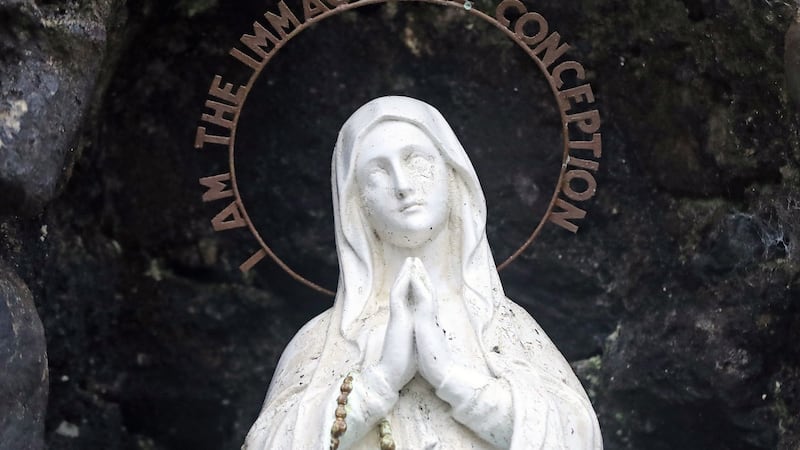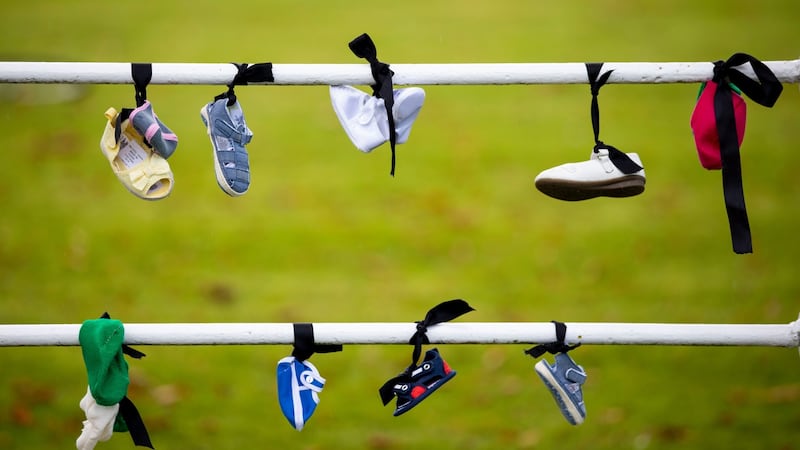Mother and baby homes were not peculiar to Ireland during the 20th century, but the proportion of Irish unmarried mothers admitted was "probably the highest in the world", it has been found.
Nearly 56,000 unmarried mothers were held in 18 institutions over the 76 year period investigated by the Mother and Baby Homes Commission, which has reported today.
Ireland also appeared to be “the only country where large numbers of unmarried pregnant women left their native country”, though many others emigrated for other reasons, too.
The commission also said it was “likely that there were a further 25,000 unmarried mothers and a larger number of children in the county homes which were not investigated (by the commission); admissions to county homes were largely pre-1960.”
The women admitted to the homes were aged between 12 and their early 40s, but 80 per cent were between 18 and 29. More than 5,000 of them were aged under 18.
The commission had seen no evidence gardaí were informed about pregnancies in the under-age girls, even though some pregnancies “were the result of rape”.
“Some women had mental health problems, some had intellectual disability”, but “the majority were indistinguishable from most Irish women of their time,” the 3,000 page report concludes.

The only difference was they were unmarried and pregnant, but their lives were “blighted” by that fact because of the responses of the child’s father, “their immediate families and the wider community”.
“They were forced to leave home, and seek a place where they could stay without having to pay,” the report said, leaving the women with no choice but to enter the homes because of the lack of family support.
Many “were destitute” and “feared the consequences of their pregnancy becoming known to their family and neighbours”. They entered the homes “to protect their privacy”, and some went to Britain.
The homes were frequently “overcrowded”, with poor infection control and a lack of proper hygiene, while “some of the institutions were in very poor physical condition”.
The commission did not see any information about food in the homes until the 1940s but found the Department of Local Government regulations had ordered a “meagre” diet for women held in county homes.
The women suffered particularly during the Emergency years – between 1939 and 1945 – forced to cook food on open fires, or use spoiled meat and low-quality bread and milk dumped by suppliers.
In general, however, the report found food in the homes was “not dramatically different to the diet in an average Irish home during those years”.
In the early decades of the homes from the 1920s most women admitted to them “were domestic servants or farm workers or they were carrying out unpaid domestic work in the family home”.
In the later years, particularly from the 1970s, they “were clerical workers, civil servants, professional women and schoolgirls or third-level students”.
There was “no evidence that women were forced to enter mother and baby homes by the church or State authorities,” but “most of the women had no alternative”. the commission said.
Many had contacted “the Department of Local Government and Public Health (DLGPH), their local health authority or a Catholic charity seeking assistance because they had nowhere to go and no money.”
Often, they were brought to the homes “by their parents or other family members without being consulted as to their destination,” the report concluded.
The “overwhelming majority” were funded by their local health authority while some went into the homes as private patients and paid themselves or their family did.
Living conditions in the homes were basic but “must be seen in the context of the living conditions in private homes” over those decades, the commission report said.
It noted how “in 1961 only 12 per cent of rural households had water on tap, which meant 88 per cent had no indoor toilets, fixed baths, hot water on tap or washing machines”.
Thousands of working class families in the cities “lived in grossly over-crowded tenements with a toilet in the backyard which might be shared by several families”.
Families were large and “so many beds were shared by two or more children, bedrooms were not heated and old coats were often substituted for blankets”. The report pointed out “many unmarried mothers came from such homes, and the conditions in mother and baby homes should be evaluated with this in mind”.
Where the women’s experiences in the homes were concerned it found “no evidence of the sort of gross abuse that occurred in industrial schools. There were a small number of complaints of physical abuse” and, while the women worked, “they were generally doing the sort of work that they would have done at home”.
However, it found “women in the county homes did arduous work for which they should have been paid”.
The women “did suffer emotional abuse and were often subject to denigration and derogatory remarks”. There “was little kindness shown to them and this was particularly the case when they were giving birth,” according to the report.
The atmosphere in the institutions “appears to have been cold and seemingly uncaring. They offered little sympathy or counselling to the women who had been rejected by their family and the father of their child”. But “conditions improved on all respects in the later decades”.
For many of the women, childbirth was “a traumatic experience” as “the overwhelming majority were first time mothers and they were probably uninformed about childbirth”, the report said. This trauma “was undoubtedly worse for women whose pregnancy had devastated their normal life and resulted in their removal from home, family and friends”.
It was “especially difficult for the many women who had no prospect of keeping their child”. Until 1973, when the Unmarried Mother’s Allowance was introduced, “most women had no realistic prospect of keeping their child unless they were assisted by their family”.

In what will come as surprise to many, the commission also found that until the 1960s or the 1970s the quality of maternity care in the homes “ was probably superior to that available to the majority of Irish women at the time”. It pointed out “in the first half of the 20th century most women gave birth at home, attended by a midwife, and sometimes by an untrained `handywoman’. They gave birth in houses without running water or proper sanitation, whereas all mother and baby homes had newly built or improved maternity units by the late 1930s, and a qualified midwife”.
The commission also identified the deaths of women while resident in the 18 homes investigated, up to 57 per cent of which were directly or indirectly associated with pregnancy. The figures were higher than the national average in the 1930s: 5.6 per 1,000 births compared to the 4.8 per 1,000 national figure. However the decline in such deaths over subsequent decades “mirrored national trends”.
Mother and baby homes “were greatly superior to the county homes where, until the 1960s, many unmarried mother and their children were resident.” Conditions in the county homes “were very poor” and the women who had been in them “have been largely forgotten”.
Included were “women on a second or subsequent pregnancy and women from the poorest families”. The county homes also admitted “women with special needs, mental health problems, venereal disease or a criminal conviction, who would be rejected by a number of mother and baby homes,” the report said.
In the county homes there were also children with special needs, including the children of married families, but the accommodation given these children “was grossly inadequate; some of the descriptions are extremely distressing,” the commission report said.
When it came to length of stay in the mother and baby homes the commission found that of the 46,671 women for whom it had the information, “less than six per cent stayed for more than two years while 70 per cent stayed for six months or less”.
The women’s length of stay was linked to the provision of a long-term placement for her child, usually in foster homes prior to legal adoption being introduced in 1953. In the 1950s the average stay in the homes was 11 months for the majority of women.
In general, and unsurprisingly, “the longest stays were among women who lacked financial and personal support from their families that would enable them to make arrangements for their child”.
With an increasing number of children being adopted in the 1960s, the length of stay by unmarried mothers in all homes “fell sharply; by 1970 women remained for an average of one month after birth”.
Where work was concerned, until the 1970s women in the homes “carried out most of the domestic chores, including laundry for the home, and most of the care of infants”. Women “appeared to have remained in the maternity unit for approximately two weeks following the birth of their child”.
The commission felt “the key consideration relating to the workload of women” in the homes was “the fact that there were a large number of healthy young women to share the work and at any time there was something approaching parity between the number of women and children”.
The commission was unable “to verify or refute” claims that useless work was assigned to some women as punishment.
However, the work situation was much different in the county homes where conditions were more basic and the unmarried women were “far outnumbered by children, including older children, and by elderly and incapacitated adults”.
It was also the case that most county homes did not employ domestic servants. The women “continued to carry out unpaid work in some county homes until the early 1960s,” the commission found.
When it came to the government, the commission found “there is no evidence that unmarried mothers were ever discussed at Cabinet during the first 50 years after independence. Responsibility for unmarried mothers and their children was seen as resting with the local authorities”.
It was also the case “there was little public discussion about unmarried mothers or mother and baby homes before the 1960s” in Ireland.








